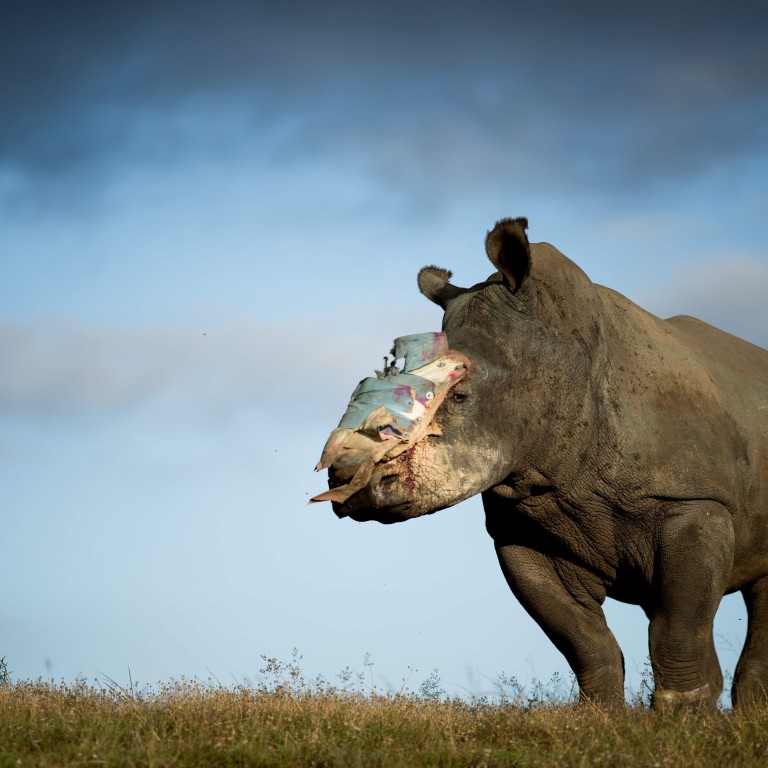
'It's our culture': Rhino horn is still for sale in San Francisco Chinatown, despite crackdown
At Wei’s spice shop in San Francisco’s Chinatown, Tiffany, a Chinese-American attorney who has just finished law school, waits until the rush of customers subsides before turning to the owner to ask what other items are for sale in the back.
This shop, she says, is where her friends have said rhino horn can be purchased.
“He said he has what we are looking for,” Tiffany says, as Wei, an elderly man who says he is in his 80s, hurries back with a number of jars and containers. He rattles off the contents of each one in Chinese. “Bear bile, black rhino horn, Javan rhino horn. He says he can get anything you want,” says Tiffany.
Wei makes a kissing motion with his lips. “Apparently, this is what can get your sex drive going, he says,” Tiffany translates.
California legislators aiming to pass more stringent regulations on the sale and dissemination of ivory and rhinoceros horns received a boost last week when a San Francisco art dealer pleaded guilty to selling an undercover federal agent two black rhinoceros horns for US$55,000.
The art dealer, Lumsden Quan, and Mill Valley man Edward Levine will face sentencing in December.
But despite Quan’s guilty plea on Friday and the attempt at a crackdown, rhino horns and other illicit animal products remain on sale in San Francisco’s Chinatown, as Tiffany so easily demonstrates.
Although rhino horns do not have any medical benefit, nor do they act as an aphrodisiac, some traditional Asian doctors believe they can help treat fever, rheumatism, gout and other disorders. Chinese medical texts from the 16th and 17th century, including Li Shih-chen’s 1597 text Pen Ts’ao kang mu, allude to the healing power of the horn, which is ground up to make a fine powder to treat an assortment of minor ailments.
According to the lobby group Save the Rhino, it “is a testimony to the power of tradition that millions of people believe” in its supposed benefits. “Of course, if people want to believe in prayer, acupuncture or voodoo as a cure for what ails them, there is no reason why they shouldn’t, but if animals are being killed to provide nostrums that have been shown to be useless, then there is a very good reason to curtail the use of rhino horn.”
Kai, an elderly shopkeeper with a business just down the street from Wei’s, disagrees and says Chinese medicine should be subject to similar laws to those that permit Native Americans to carry out their traditions, in a limited manner. “Why are we being punished for our culture?” he asks, as he slides a container he claims contains rhinoceros horn powder. “This is important to Chinese people and Asians, so it isn’t right to just say: ‘No more’.”
He adds: “I sell this for hundreds of bucks per gram, so it is good business and I don’t want to lose this.”
When asked whether he believes Asian desire for rhino horns has given rise to massive poaching in Africa and elsewhere, leaving rhino populations endangered and on the verge of extinction, he smiles. “It is life. Things die out and we can’t get too concerned about it.”
California bill AB-96 aims to end the trade in rhino horns as well as ivory across the state. Sponsored by state assembly speaker Toni Atkins and state senator Ricardo Lara, the legislation intends to give law enforcement the ability to better enforce pre-existing regulations as well as to add specific language regarding what is not permissible when dealing with endangered rhinos and elephants.
The bill, which heads to a final committee hearing on Thursday - and which the sponsors hope will be passed during the current assembly session - would end exemptions and make possessing such endangered-animal parts a crime with a penalty of up to US$10,000.
The art dealer Quan and Edward Levine were charged under existing federal wildlife-protection laws.
All rhino species are protected under the Convention on International Trade in Endangered Species of Wild Fauna and Flora ( CITES ), an agreement among 175 countries to ensure that international trade in specimens of wild animals and plants does not threaten their survival. The US Fish and Wildlife Service is the federal agency responsible for the US government’s implementation of CITES.
All five species of rhinos surviving in the wild today are also listed as endangered under the Endangered Species Act (ESA).
* Some names in this article have been changed
